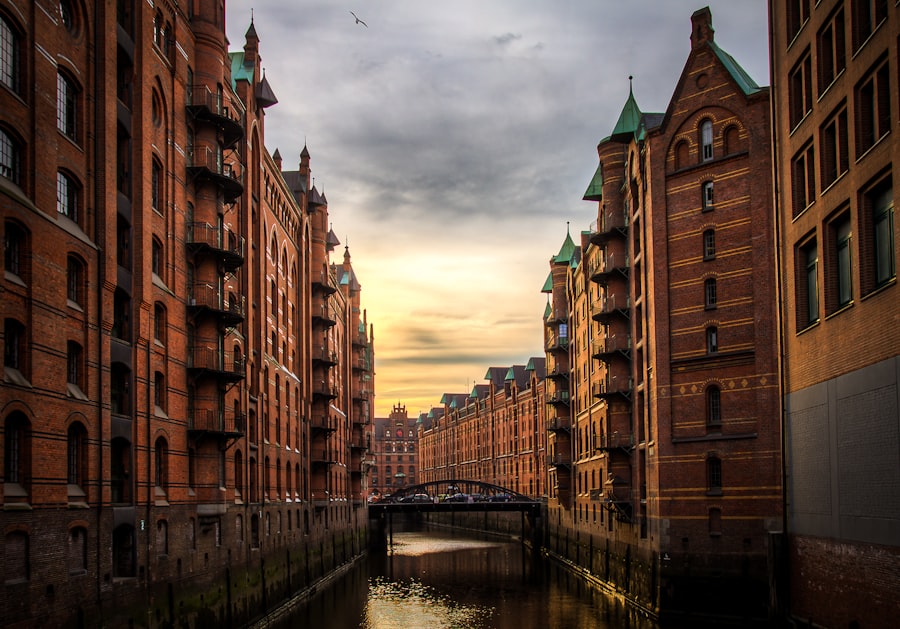The origins of Godzilla can be traced back to the post-World War II era in Japan, a time marked by devastation and a profound sense of loss. The first film, “Gojira,” was released in 1954, created by Toho Studios. This iconic creature was born from the collective trauma of nuclear warfare, symbolizing the fears and anxieties of a nation grappling with the aftermath of atomic bombings.
Godzilla emerged not just as a monster but as a metaphor for destruction, representing the catastrophic consequences of humanity’s technological advancements. The film’s creators, including director Ishirō Honda and special effects artist Eiji Tsuburaya, sought to convey a powerful message about the dangers of nuclear power and the fragility of life.
The name “Godzilla” itself is derived from the Japanese words “Gojira,” a combination of “gorilla” and “whale,” reflecting the creature’s immense size and power. The original film’s narrative was steeped in social commentary, addressing not only the horrors of nuclear war but also the environmental consequences of human actions. This duality—Godzilla as both a monster and a cautionary tale—set the stage for a character that would resonate with audiences for decades to come.
Key Takeaways
- Godzilla was created in 1954 as a metaphor for the destructive power of nuclear weapons and the trauma of World War II.
- Godzilla has become an iconic figure in Japanese pop culture, inspiring numerous films, TV shows, and merchandise.
- Over the years, Godzilla has evolved from a symbol of destruction to a more complex and sympathetic character in film.
- Godzilla’s impact on Western cinema can be seen in the influence on monster movies and the use of special effects.
- Godzilla holds cultural significance as a symbol of resilience and the ability to overcome adversity, resonating with audiences worldwide.
Godzilla’s Impact on Japanese Pop Culture
Godzilla quickly became a cultural phenomenon in Japan, transcending the boundaries of cinema to become an integral part of the national identity. The character’s popularity led to a series of sequels, spin-offs, and merchandise that permeated everyday life. You can see Godzilla’s influence in various forms of media, from comic books to television shows, as well as in fashion and art.
The creature became a symbol of resilience for the Japanese people, embodying their ability to rise from the ashes of destruction and rebuild their lives. Moreover, Godzilla’s impact on Japanese pop culture is evident in the way it has inspired countless artists and creators. From anime to video games, the character has served as a muse for generations.
You might notice that Godzilla has been reimagined in various styles, reflecting the evolving tastes and sensibilities of each era. This adaptability has allowed Godzilla to remain relevant, ensuring that new audiences continue to discover and embrace this iconic figure. As you explore this cultural landscape, you’ll find that Godzilla is not merely a monster; he is a symbol of hope, fear, and the complexities of human existence.
The Evolution of Godzilla in Film

As you journey through the evolution of Godzilla in film, you’ll observe how the character has transformed over time. Initially portrayed as a terrifying force of nature, Godzilla gradually evolved into a more complex figure, often depicted as a protector of humanity rather than just a destructive monster. This shift began in the late 1960s with films like “Son of Godzilla,” where the creature was shown nurturing its offspring.
This change reflected societal shifts in Japan, where audiences began to embrace themes of cooperation and coexistence. In the 1980s and 1990s, Godzilla underwent another transformation with the introduction of more sophisticated special effects and storytelling techniques. Films like “The Return of Godzilla” (1984) reestablished the character’s menacing presence while also addressing contemporary issues such as environmental degradation and urbanization.
As you watch these films, you’ll notice how they mirror societal concerns, making Godzilla not just a monster but a reflection of human fears and aspirations. The franchise continued to evolve into the 21st century, with reboots and crossovers that introduced Godzilla to new generations while maintaining its core themes.
Godzilla’s Influence on Western Cinema
| Metrics | Data |
|---|---|
| Number of Godzilla Films | 36 |
| Box Office Revenue of Godzilla Franchise | 1.6 billion |
| Number of Hollywood Godzilla Films | 3 |
| Number of Godzilla Video Games | over 30 |
| Number of Godzilla TV Series | 3 |
Godzilla’s influence extends far beyond Japan, leaving an indelible mark on Western cinema as well. The character has inspired numerous filmmakers and franchises, shaping the way monsters are portrayed on screen. You can see echoes of Godzilla in films like “Jurassic Park,” where massive creatures wreak havoc on civilization, or in the “Transformers” series, which features colossal robots battling for supremacy.
These films often draw on the same themes of destruction and humanity’s struggle against overwhelming forces that Godzilla embodies. Moreover, Hollywood’s attempts to adapt Godzilla for Western audiences have sparked both fascination and controversy. The 1998 American remake faced criticism for straying too far from the original’s essence, while the more recent “Godzilla” (2014) and its sequels have been praised for capturing the character’s spirit while incorporating modern filmmaking techniques.
Godzilla has become a bridge between cultures, illustrating how universal themes can resonate across borders.
The Cultural Significance of Godzilla
Godzilla holds profound cultural significance that transcends mere entertainment. As you examine this iconic figure, you’ll discover that he serves as a lens through which societal fears and hopes are expressed. The creature embodies humanity’s struggle with its own creations—nuclear weapons, environmental destruction, and urbanization—making him a powerful symbol of our times.
In many ways, Godzilla represents our collective conscience, reminding us of the consequences of our actions. Additionally, Godzilla has become a source of national pride for Japan. The character is often seen as an ambassador for Japanese culture, showcasing its unique storytelling traditions and artistic sensibilities to global audiences.
You might notice how Godzilla has been embraced in various cultural events, from parades to exhibitions celebrating his legacy. This cultural significance extends beyond Japan; Godzilla has become an icon recognized worldwide, representing not just a monster but a rich tapestry of history and emotion.
Godzilla’s Place in the Kaiju Genre

Within the kaiju genre—characterized by giant monsters—Godzilla stands as its most prominent figure. As you explore this genre, you’ll find that it encompasses a wide range of films featuring colossal creatures battling each other or wreaking havoc on cities. However, Godzilla’s unique blend of horror and humanity sets him apart from other kaiju.
While many monsters are depicted purely as antagonists or forces of nature, Godzilla often embodies a more nuanced character arc. The kaiju genre itself has evolved significantly since Godzilla’s debut. You can see how filmmakers have experimented with different themes and styles while still paying homage to the original creature.
From classic films like “Mothra” to modern interpretations like “Pacific Rim,” each entry adds layers to the genre while maintaining its core elements. As you engage with these films, you’ll appreciate how Godzilla has paved the way for other kaiju characters to emerge, solidifying his place as the king of monsters.
Godzilla’s Legacy in Merchandise and Media
Godzilla’s legacy extends far beyond film; it permeates various forms of merchandise and media that celebrate this iconic character. As you explore this aspect of Godzilla’s influence, you’ll find an extensive array of toys, collectibles, clothing lines, and even video games dedicated to him. These products not only cater to fans but also serve as a testament to Godzilla’s enduring popularity across generations.
The merchandising phenomenon surrounding Godzilla reflects his status as a cultural icon. You might come across limited-edition figures that capture his likeness or apparel featuring his iconic silhouette. Additionally, video games have allowed fans to engage with Godzilla in interactive ways, from battling other monsters to exploring vast cities as the creature itself.
This multifaceted approach to merchandise ensures that Godzilla remains relevant in popular culture while allowing fans to express their love for this legendary figure.
The Future of Godzilla in Japanese Cinema
As you look toward the future of Godzilla in Japanese cinema, there is much anticipation surrounding new projects that promise to reinvigorate this beloved franchise. With advancements in technology and storytelling techniques, filmmakers have exciting opportunities to explore fresh narratives while staying true to Godzilla’s roots. You may find that upcoming films aim to address contemporary issues such as climate change or technological advancements—continuing the tradition of using Godzilla as a metaphor for societal concerns.
Moreover, collaborations between Japanese filmmakers and international studios could lead to innovative interpretations of Godzilla that resonate with global audiences. As you follow these developments, you’ll witness how this iconic character continues to evolve while remaining deeply connected to its origins. The future holds great promise for Godzilla fans as new stories unfold, ensuring that this legendary monster will continue to captivate hearts and minds for generations to come.
In conclusion, Godzilla is more than just a monster; he is a cultural phenomenon that has left an indelible mark on cinema and society at large. From his origins rooted in post-war trauma to his status as an international icon, Godzilla embodies humanity’s fears and hopes while serving as a powerful symbol of resilience and adaptability. As you reflect on his journey through film and culture, it’s clear that Godzilla will continue to inspire and entertain audiences around the world for years to come.
Godzilla has played a significant role in Japanese cinema history, serving as a symbol of both anarchism and capitalism in modern society. According to a fascinating article on Kaiju News, the iconic monster represents the destructive power of unchecked capitalism and the chaos that can ensue when society prioritizes profit over people. Godzilla’s impact on Japanese culture and cinema is undeniable, making it a must-read topic for fans of the genre.
FAQs
What is the role of Godzilla in Japanese cinema history?
Godzilla is a cultural icon in Japan and has played a significant role in shaping the country’s cinema history. The character has been featured in numerous films, TV shows, and other media, and has become a symbol of Japanese popular culture.
When was the first Godzilla film released?
The first Godzilla film, titled “Godzilla,” was released in 1954. Directed by Ishirō Honda, the film was a commercial success and spawned a long-running franchise.
How has Godzilla influenced Japanese cinema?
Godzilla has had a major influence on Japanese cinema, particularly in the kaiju (monster) genre. The success of the original film led to the creation of numerous sequels and spin-offs, and the character has become synonymous with Japanese monster movies.
What impact has Godzilla had on global popular culture?
Godzilla has become a global pop culture phenomenon, with the character appearing in various forms of media, including films, TV shows, video games, and merchandise. The character’s popularity has also led to the creation of Hollywood adaptations and a dedicated fanbase worldwide.
How has Godzilla evolved over the years?
Since its debut in 1954, Godzilla has undergone various changes in appearance and characterization. The character has been portrayed as both a destructive force and a heroic figure, and has been reimagined in different ways to appeal to changing audience tastes.
